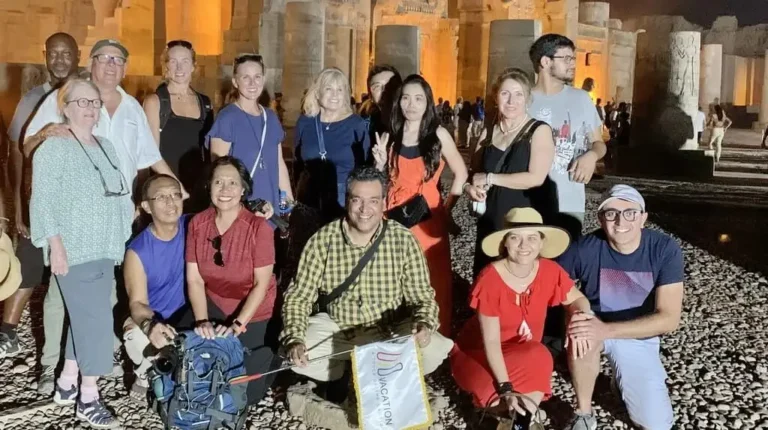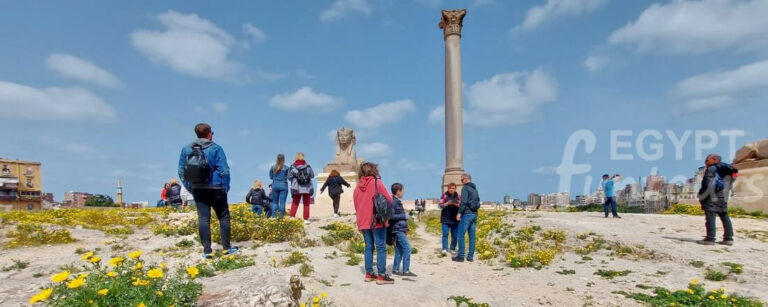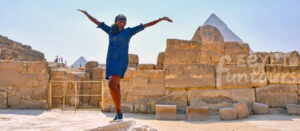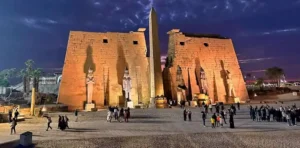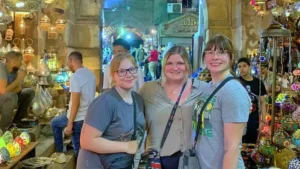Queens of Ancient Egypt
The Ancient Egyptian Queens: In the annals of ancient history, the role of women in shaping civilizations is often overlooked. However, in the context of ancient Egypt, women held a position of profound significance, wielding influence and power that rivaled their male counterparts. The importance of women in ancient Egypt transcended traditional gender roles, with women playing pivotal roles in politics, religion, and society. Their impact reverberated through the annals of time, leaving an indelible mark on the rich tapestry of Egyptian history.
The Top 40 Most Notable Ancient Egyptian Queens
Ancient Egyptian women played a significant role in many facets of life, making them partners with males and contributing significantly to the rise of Egyptian civilization. Thus, a few women rose to become ancient Egyptian queens. So it was not surprising for ancient society to respect women and look at them with reverence for thousands of years, making them strongly present in religious and mundane scenes.
Old Kingdom’s Queens

1. Queen Nithotep:
She is the earliest Egyptian queen that historians have discovered. She is the wife of King Narmer, the Pharaonic dynasty’s founder. As a result, this king is the first woman in history to held the nickname First Lady). The queen gave birth to a son named Hor-Aha or Horus the Warrior, which means The Name of Natehotep in Egyptian (the goddess’s name is Nate Radhiya), and the goddess Nate was the guardian of the delta, according to Egyptian religion. In Abydos, King Narmer erected a tomb for his wife (Nithotep), which is regarded as one of the most beautiful tombs ever discovered.
2. Queen Merit Nate:
She is one of the first family rulers, having inherited the throne after her husband’s death. She is the wife of King (Jar) and is of northern descent, with the name meaning (Beloved of the Lord Nate). Her tombs were discovered in two locations: the first in Saqqara, Egypt’s greatest city, and the second in Abydos, Egypt’s second largest city.
3. Hetepheres I, Queen of the Fourth Dynasty:
She is the daughter of Ruler (Huni), the Third Dynasty’s final king. And they discovered remnants of her, which are currently housed in the Egyptian Museum in Cairo, and the meaning of the queen’s name in Egyptian is (the sick one).
4. Queen Hanutsen:
Her Egyptian name has the following meaning: (their lady). Queen Hanutsen was one of King Sneforu’s daughters, and she married her brother, King Khufu, who erected a pyramid for her on the south side of his pyramid, close to his own.
5. Queen Hehotephere II:
She is the daughter of King Khufu, and she married her crown prince’s brother (Kaweeb).
6. Queen Meresankh III (Queen Meresankh):
Three queens of the Fourth Dynasty were given the name Meresankh, which means “those who enjoy life.” The queen’s tomb, located east of the Great Pyramid, is one of the most important rock tombs in the Giza cemetery. It consists of three halls and is located on the cemetery’s walls. Builders etched statues of the Queen and members of the royal family into the tomb.
7. Queen Khentkaus:
She is the second Egyptian queen to take the country’s throne and govern alone. Queen Khentkaus is the mother of two monarchs, Sahure and Neferirkare. She married one of the sun’s priests, Userkaf, the Fifth Dynasty’s first monarch. She bore him a son named Sahure. A pyramid in the shape of a rectangular coffin was created for the queen on a limestone base. Queen Khentkaus was the first Egyptian queen to establish a new type of architecture, which combined the pyramidal and mastaba shapes.
8. Queen Rhodopis:
Greek sources only referenced the queen’s name. Her name means “rosy-cheeked” in Greek. The queen was from Thrace. Most of the stories about this Queen are more legends than historical truths. K-Santos Samoyed transported her to Egypt to be sold as a slave. In Egypt, she was set free. She was able to acquire great fortune as a Queen because of her beauty.
9. Queen Iput I (6th Dynasty):
King Teti, the founder of the Sixth Dynasty (2420-2280 BC), was her husband. His pyramid can be seen at Saqqara. Queen Iput had a son named Pepi I, who became the dynasty’s second monarch. Pepi I constructed a hierarchical group for his mother close to his father King Teti’s funeral temple.
10. Queen Emtsy:
She is one of King (Bibi Iwives, )’s and he accused her of infidelity with his minister, and the king commissioned the judge (Wani) to research the case and conduct investigations with the queen, and the documents did not reveal the punishment that the king inflicted on his wife, but he married another wife, the daughter of one of Girga’s greats, and they had a child.
11. Nitocris) (Queen Nate Iqrit):
She is from the late Sixth Dynasty (Nitocris), and she was able to reign Egypt for two years before her period ended without a trace, and the throne of that family crumbled after that, and it has a pyramid in the northwest side close to King Pepi II’s pyramid at Saqqara.
Middle Kingdom (12th Dynasty) Queens

- Queen Mersger: She is the wife of Ruler (Senusret III), the Twelfth Dynasty’s most powerful king (1991–1778 BC). During his campaigns in Nubia, Senusret III built a temple at the Semna fortification, and the name of this queen is etched on one of the objects now in the British Museum in London.
- Queen (Sobekneferu): she was known as (Sobek Kare) and was the eldest daughter of King (Amenemhat III) (1841–1792) BC. She was dubbed (The Lady of the Two Lands). According to the Turin papyrus, Queen Sobek governed the land for three years. One of its most noteworthy achievements is that Nubia has become one of Egypt’s lands, with many strongholds and castles, and the Nuba mines have become a major source of gold and ivory extraction. Queen Sobekneferu erected a pyramid near her father’s in Fayoum’s Hawara region, and the Twelfth Dynasty came to an end with Queen Sobek’s reign.
Second Intermediate Period / 17th Dynasty Queens

- Queen Tetishari: The king’s wife (Taa’a I) gave birth to a boy named (Saqanun Ra) and a daughter named (Taa’a I) (Ahhotep). The queen survived until her grandson, King Ahmose I, took over the throne.
- Eahhotep I: Her given name has the following meaning: (the moon is satisfied). She married Seqenen Ra and had two children with him, Kamose and Ahmose. During Egypt’s conflict with the Hyksos, she played a crucial role. She dispatched her two sons, Kamos and Ahmose, to the fight, and in 1859, we discovered the sarcophagus of Queen Iahhotep in the arm area Abu al-Naga in Qena, where he discovered the queen’s royal treasures in the coffin, as well as the queen’s mummy and a scarab and a gold chain in the name of King Ahmose.
18th Dynasty Queens of The New Kingdom
1. Queen Ahmose-Nefertari:
She was the daughter of King Seqenenre and his wife Queen EahHotep. Princess Merit-Amun, the oldest daughter, Princess Sat-Amun, Prince Saba-er, and Prince Sa-Amun were the children of Queen Ahmose Nefertari’s first marriage to her brother Camus, and after his death in the Independence battle, she married her brother Ahmose I and gave birth to Princess Merit-Amun, Princess Sat-Amun, Prince Saba-er, and Prince Sa-Amun. She and her son, King Amenhotep I, shared the kingdom of Egypt. Her reign was a prosperous one. Following her death, the ancient Egyptians began to worship this Queen, and she became a popular divinity among all Egyptians until she took on the form of a common cult, making her one of the Egyptian goddesses alongside the god Amun.
2. Queen Eahhotep II:
She is the sister of Ruler (Amenhotep I), the eighth dynasty’s second king. According to Egyptian legend, King Amenhotep I married his sister, Aahhotep II. The queen’s mummy is in Cairo’s Egyptian Museum, which is located in Luxor’s Deir el-Bahari. However, we have yet to discover the mummy itself.
3. Queen Hatshepsut:
Hatshepsut was the 5th king of the 18th Dynasty. She was the daughter of King Thutmose I and her title was “The Daughter of Amun.” She was a great Queen who held all the titles of the pharaohs, such as the Son of God Ra and the King of Upper and Lower Egypt.
4. Queen Neferure:
Queen Neferure was the daughter of King Tuthmosis II and Queen Hatshepsut. She married Tuthmosis III. Her name means “The Beauty of God Ra.” Several statues depict Senmut embracing Princess Neferure; some are in the Egyptian Museum. During Hatshepsut’s reign, people discovered an inscription with Queen Neferure’s name on the mortuary temple in Deir el-Bahari. The queen died in Hatshepsut’s 16th year of reign.
5. Queen Merit-re Hatshepsut:
Queen Merit-re Hatshepsut was Queen Hatshepsut’s second daughter from her husband, King Tuthmosis II. She was King Thutmosis III’s second wife after Queen Neferure. Someone discovered a statue of Queen Merit-re in the shape of a Sphinx. The statue has Thutmose III’s name carved on its breast. It is currently in the Barocco collection in Italy, with replicas at the Turin and Berlin museums.
6. Queen Tiaa:
She was the wife of King Amenhotep II, who governed Egypt for about 25 years. Her name means “strength” in the ancient Egyptian language. King Horemheb’s tomb in the Valley of the Kings has her name carved on its walls, where he named King Tuthmosis IV, the queen’s son. He disclosed the queen’s remains in her husband’s burial temple west of Luxor.
7. Queen Mutemwiya:
She was the king’s wife (Thutmose IV), and this was a once-in-a-lifetime occurrence in Egyptian history. A pharaoh of Egypt married a foreign princess for the first time and made her his first wife. This union was the result of Egypt’s progress during the 18th dynasty’s reign. Goddess Mut was one of the members of the (Thebes Holy Trinity) with whom her husband (God Amun, the main god of the kingdom) was coupling, according to ancient Egyptian religion. The king (Amenhotep III) gave birth to Queen Mutemwiya, who had a holy ship carved out of granite with the queen’s name and titles.
8. Queen Tiye:
Her son was Akhenaten, and she was the wife of King Amenhotep III. Despite the fact that she was not of royal blood, but rather a commoner’s daughter, she played a significant role during her husband’s and son’s reigns. Her family came from the Sohag city of Akhmim, and she had a brother named Mohammad (Anan). He worked in the king’s court as one of the four great priests. In her name, Amenhotep III issued many scarabs. The king authorised the construction of an artificial lake for Queen Tiye near to the royal palace in the 11th year of his reign. In the north of Nubia, he also built a temple for his bride. Queen Tiye had four daughters and a son named Akhenaten. The queen was entombed in the Valley of the Kings in her tomb.
9. Queen Nefertiti:
She was the wife of King Akhenaten, who reigned from 1353 BCE to 1353 BCE. Because of her exquisite bust statue in the Berlin Museum, Nefertiti is one of the most well-known Queens of the 18th Dynasty. She and her husband relocated from Luxor to Amarna, where he founded a new capital. Nefertiti vanished from historical books all of a sudden.
10. Queen Merit Aten:
She is the eldest daughter of King Akhenaten and his wife Nefertiti, and her name means “I am the eldest daughter of King Akhenaten and his wife Nefertiti” (Beloved of Aten). She lived in the royal palace with her father when he divorced his wife Nefertiti and made his daughter the first lady of the palace. Akhenaten declared Queen Merit Aten, the king’s half-brother (Samnekh Kare), as his partner in government. After her father died, the queen moved to Thebes with her husband. We discoverd a cartouche bearing the queen’s name and title (the king’s great wife).
11. Princess Makt Aten:
She is King Akhenaten’s and Queen Nefertiti’s second daughter. We do not know much about the princess’s life because she died early in the thirteenth year of her father’s reign, and her tomb is in the royal cemetery in Akhet Aten.
12. Queen Ankhs in Amun:
She is the wife of King Tutankhamun “the Golden Pharaoh”. She is Akhenaten’s third daughter. After splitting from his wife, Nefertiti, after her father’s death, he married his daughter, Queen Ankhs, and she bore him two children. Their mummies were discovered in Tutankhamun’s tomb.
The 19th Dynasty’s Queens

1. Queen Tuya:
Queen Tuya was a member of the royal family. She was King Seti I’s wife and had four children. Her youngest son, Ramses II, became king. Tuya gained prominence after her son’s ascension. Ramses II commissioned sculptures of her. He built her a sandstone temple. A statue of Tuya is in the Vatican Museum. Another statue is in Ramses III’s Habu city. Ramses II buried his mother in the Valley of the Queens. She died at age 60.
2. Queen Nefertari:
Queen Nefertari was the wife of King Ramses II. She was known as the beautiful queen. Her titles included heir to the throne and priestess of Hathor. She bore Ramses II’s children, but most died young. Ramses II built her a splendid temple at Abu Simbel. A statue of her is in the Brussels Museum. Nefertari died young. The king built her a beautiful tomb in the Valley of the Queens.
3. Queen Isetnefert:
Queen Isetnefert was Ramses II’s third wife. He married her at age 24. This was eight years after marrying Queen Nefertari. Her name means “beautiful Goddess Isis.” Queen Isetnefert had four children. A statue of her and her son is in the Brussels Museum.
4. Queen Hentmire:
Queen Hentmire was Ramses II’s sister. She was a daughter of King Seti I and Queen Tuya. Ramses II married her. She held titles like “king’s daughter” and “king’s wife.” Her name and portrait were found on a statue in the Vatican Museum. They were also on monuments at Abu Kabir. The queen died in the fortieth year of her husband’s reign. Her mummy is in the Egyptian Museum in Cairo.
5. Queen Maathorneferure:
Queen Maathorneferure was a Hittite queen. Ramses II married her for political reasons. This was after a peace treaty. The marriage occurred in Ramses II’s thirty-fourth year of rule. He was 57 years old. The king gave her an Egyptian name. It means “God’s Ra Justice’s beauty.” Ramses II commissioned a statue of her father. It was erected on the Abu Simbel temple walls. He also built her a palace near Fayoum. A papyrus with an inventory of her clothing was found there.
6. Queen Bintanat:
Queen Bintanat was Ramses II’s eldest daughter and wife. Her titles were “royal daughter” and “royal wife.” Her name means “daughter of the goddess Anat.” A pink granite monument of her is in Karnak Temple. Ramses II built her a tomb in the Valley of the Queens. He also engraved her name on the walls of Abu Simbel.
7. Queen Meritamen:
Queen Meritamen was Ramses II’s fourth daughter. Her mother was Queen Nefertari. King Ramses II married her because she resembled her mother. Her titles included “Daughter of the Queen” and “Lady of the Two Lands.” Her name means “beloved of Amun.” Meritamen appears in inscriptions at Abu Simbel. She was also featured on a Ramses II sculpture. Scarabs with her name were discovered. A statue of her is in Sohag. Her colorful wooden sarcophagus is in the Egyptian Museum. Her casket is now in the Turin Museum.
8. Queen Bentanta:
Her given name means “Lady of the Two Lands.” She was King Ramses II’s sixth daughter. Her title was “the Great Royal Wife.” She appeared alongside Ramses II on a colossal statue at Abu Simbel. Her name was engraved in the temple of Durr. She was the third daughter of Ramses II that he married. Her tomb is in the Valley of the Queens.
9. Queen (Tausert):
She is the nineteenth dynasty’s last king. She was Egypt’s ruler for seven years. Her given name has the following meaning: (Strong Land). She married King (Merneptah Saptah), who succeeded his brother on the throne (Imenmus). Following the death of King (Saptah), the queen married a man named (Siti), who became the ruler of Nubia. The queen requested that a burial temple for her north of Merneptah’s palace. The queen’s tomb is beside the grave of her husband, Sabtah, in Thebes.
Queens of the 21st dynasty

-
Queen Mut Najmat: The family of King Ramses XI, the last king of the Ramesses era have produced Queen Mut Najmat. King (Smendes) married her to take advantage of her royal status. He founded the twenty-first dynasty. Queen Mutt-Najmat and King (Smendes) had a son, the crown prince “Prince Psusennes I.” Her titles include (second priestess) to Amun, ruler of the gods, and (his majesty’s first and greatest royal bride). People discovered Queen Mutt Najm’s grave in Tanis. They found a granite sarcophagus with her name etched on it inside her tomb.
-
Queen Maat Kare: She is the daughter of King (Psusennes I). She married King (Bangim I), and her eldest son is a priest (Bankhi). People dubbed her the King of the Two Lands’ royal daughter. The queen died during labor, as did her small daughter. Workers obtained two wooden coffins for them, which people dubbed (the death of Em Hat).
- Queen Tahfnis: She is a queen who is maybe the wife of one of the twenty-first or twenty-second dynasty’s monarchs. This queen was alive during King Solomon’s reign.
Greek era Queens
- Cleopatra VII 69-20 B.C: Cleopatra VII, the renowned queen of Egypt in history and drama in her relationships with (Julius Caesar) and then (Marcus Antonius), the mother of (Ptolemy XV), became queen when her father (Ptolemy XII) died in 51 BC, and she is one of Egypt’s ruling queens. She is the sole member of the Ptolemaic dynasty who took it upon herself to study Egyptian and emulate the goddess (Isis), claiming that she embodies her existence on earth.
Viziers were high-ranking officials in ancient Egypt who served as the king’s chief advisors. They were responsible for governing towns, collecting taxes, and acting as judges. Other key court officials included the treasurer and the army commander.
Ancient Egyptian pharaohs wore various crowns to symbolize their authority. The Nemes crown, a striped headcloth, signified the pharaoh’s divine status and power. The Blue Crown, or war helmet, was during the New Kingdom period to symbolize military might. The Red Crown (Deshret) represented dominion over Lower Egypt, while the White Crown (Hedjet) symbolized rule over Upper Egypt. The Double Crown (Pschent), which combined the Red and White Crowns, was the ultimate symbol of the unification of both regions under one ruler.

